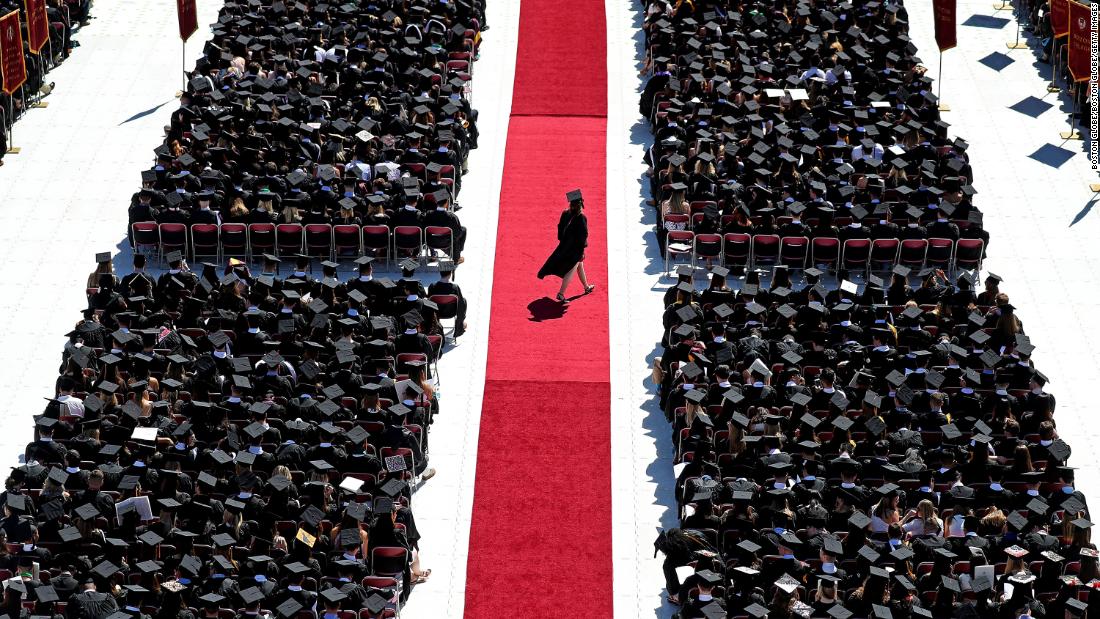Understanding The Implications Of Privatizing Student Loans Under A Trump Presidency

Table of Contents
Potential Benefits of Privatizing Student Loans
Proponents of privatizing student loans argue that a shift away from government control could bring several advantages.
Increased Efficiency and Innovation
Private lenders, driven by competition and profit motives, might offer more efficient loan processing and innovative repayment options. This could translate to a more streamlined and student-friendly experience.
- Faster application processing times: Private sector efficiency could reduce the lengthy application processes often associated with government programs.
- Potential for personalized repayment plans: Private lenders might offer customized repayment plans tailored to individual borrowers' financial situations, unlike the often rigid structures of federal loans.
- Introduction of new technologies to streamline the process: The private sector is often quicker to adopt and implement new technologies, potentially improving the overall loan application and management process. This could include online portals, mobile apps, and AI-driven solutions.
Reduced Government Burden
Transferring the responsibility for student loans to the private sector could significantly reduce the financial strain and administrative burden on the government.
- Reduced government spending on loan servicing and administration: The government could redirect funds currently used for managing student loans to other critical areas.
- Freeing up government resources for other priorities: Reduced administrative overhead could allow government agencies to focus on other essential educational initiatives.
- Potential for decreased reliance on taxpayer funding: Privatization could potentially decrease the reliance on taxpayer dollars to fund student loan programs.
Potential Drawbacks of Privatizing Student Loans
Despite the potential benefits, the privatization of student loans presents several significant drawbacks.
Increased Costs for Borrowers
One of the most significant concerns is the potential for increased costs for borrowers.
- Higher interest rates and fees compared to federal loans: Private lenders, aiming for profitability, may charge higher interest rates and fees than government-backed loans, resulting in substantially increased debt for students.
- Potential for predatory lending practices: Without robust regulations, there's a risk of predatory lending practices targeting vulnerable students.
- Increased difficulty for borrowers to manage their debt: Higher interest rates and fees can make it significantly more challenging for borrowers to repay their loans, potentially leading to default.
Reduced Access to Loans
Privatization could disproportionately affect certain groups, restricting access to higher education.
- Potential for stricter lending criteria: Private lenders may implement stricter lending criteria, potentially excluding students from lower-income backgrounds or those pursuing less lucrative fields of study.
- Disproportionate impact on underprivileged students: This could exacerbate existing socioeconomic inequalities in access to higher education, limiting opportunities for marginalized communities.
- Reduced access to higher education for certain populations: This ultimately undermines the goal of making higher education accessible to all.
Lack of Regulatory Oversight
Reduced government oversight raises concerns about consumer protection and potential abuse by private lenders.
- Potential for unfair lending practices: Without sufficient regulation, private lenders might engage in unfair or exploitative practices.
- Increased risk of borrower exploitation: Vulnerable students could be particularly susceptible to predatory lending and unfair terms.
- Reduced accountability for lenders: A lack of government oversight could reduce accountability for lenders, making it harder to address issues of misconduct or unfair practices.
Economic and Social Implications of Privatization
The economic and social consequences of privatizing student loans are far-reaching and complex.
Impact on the Economy
Privatization's effect on the economy is uncertain and potentially dual.
- Potential for both positive and negative economic effects: While it could stimulate competition in the lending market, it might also increase the overall cost of higher education, impacting economic growth.
- Impact on overall student debt levels: Higher interest rates could lead to a significant increase in the national student debt burden.
- Influence on higher education affordability: Privatization could make higher education less affordable, potentially deterring students from pursuing further education.
Social Equity Concerns
Privatization could exacerbate existing social inequalities, impacting access to higher education.
- Exacerbation of socioeconomic inequalities in access to higher education: Students from disadvantaged backgrounds may be disproportionately affected, widening the achievement gap.
- Impact on social mobility: Reduced access to higher education could limit social mobility and perpetuate cycles of poverty.
- Potential for increased disparities in educational outcomes: Unequal access to loans could lead to disparities in educational attainment and future earning potential.
Conclusion
Privatizing student loans presents a complex issue with significant potential benefits and drawbacks. While it could lead to increased efficiency and innovation in the lending market, it also risks increasing costs for borrowers, reducing access to loans for certain populations, and potentially exacerbating socioeconomic inequalities. A thorough evaluation of these implications is crucial before implementing such a sweeping policy change. Understanding the potential ramifications of privatizing student loans is critical for informed policymaking and ensuring equitable access to higher education. Further research and public debate are essential to navigate the challenges and opportunities associated with this complex issue. We must carefully consider the potential impact of student loan privatization on all stakeholders to make informed decisions about the future of higher education financing.

Featured Posts
-
 Alkaras Povreden Rune Osvaja Barselonu
May 17, 2025
Alkaras Povreden Rune Osvaja Barselonu
May 17, 2025 -
 Najbolje Destinacije U Ujedinjenim Arapskim Emiratima
May 17, 2025
Najbolje Destinacije U Ujedinjenim Arapskim Emiratima
May 17, 2025 -
 Knicks News Jalen Brunson Injury Update Tyler Koleks Extended Role And Season Finish Outlook
May 17, 2025
Knicks News Jalen Brunson Injury Update Tyler Koleks Extended Role And Season Finish Outlook
May 17, 2025 -
 New York Knicks Star Player Seeks Reduced Court Time
May 17, 2025
New York Knicks Star Player Seeks Reduced Court Time
May 17, 2025 -
 Emiratet E Bashkuara Arabe Shkembim I Suksesshem I Te Burgosurve Midis Rusise Dhe Ukraines
May 17, 2025
Emiratet E Bashkuara Arabe Shkembim I Suksesshem I Te Burgosurve Midis Rusise Dhe Ukraines
May 17, 2025
